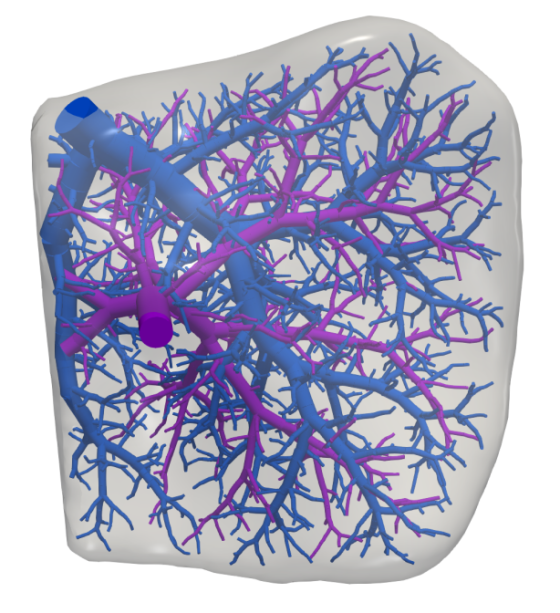Redistribution and homogenization of blood flow in resected human liver tissue
Bachelorarbeit, Masterarbeit
Liver resection is a common medical procedure used to remove tissue affected by tumors. The human liver, charactarized by its high vascularization, contains vessels of various sizes spanning multiple scales. Liver resection significantly impacts the vascular trees, which are responsible for blood distribution and collection, by removing a substantial number of vessels. This inevitably leads to a redistribution of blood flow. Under certain assumptions, the vascular trees can be simplified and modeled as a hierarchically structured Poiseuille network. Existing models allow the homogenization of these vessel structures to move from a discrete network model to a resolved continuum model. The homogenized model can then be coupled with a Poiseuille model for the larger vessels in the upper hierarchies, which are not suitable for homogenization. The objective of this thesis is to investigate the impact of liver resection on blood flow within the vessels, with a particular focus on the upper hierarchical levels. This will involve modeling and implementing the vascular tree as a Poiseuille network, followed by an analysis of necessary adaptations in the coupling to the homogenized structures.
Details zur Aufgabenstellung finden Sie in der PDF-Version.



